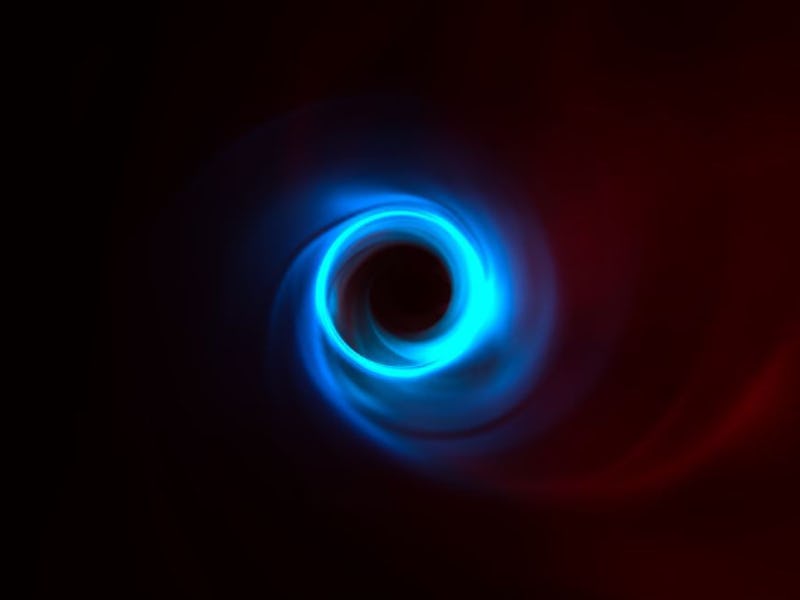Scientists conduct a gravity test at the edge of a black hole for the first time
This proves that a picture of a black hole can be used to test the theory of gravity.

A little more than a year ago, humanity got its first good look at the most mysterious object of the vast universe.
For the first time, astronomers had imaged a black hole, which was lurking on the dark side of the universe some 53 million lightyears away, at the center of the galaxy Messier 87 (M87).
The iconic image has fed scientists valuable data not just about this particular massive object, but about black holes across the entire cosmos.
Now, a team of astronomers using that very image were not only able to learn about supermassive black holes, but use its distortion of spacetime to test out the theory of gravity.
Their findings were detailed in a study published last week in The Astrophysical Journal and introduces a new area of black hole research.
The image of M87*, the first to be captured of a black hole ever, was compiled using the Event Horizon Telescope (EHT), which collected a massive amount of data on M87* through radio antennas around the world. The resulting picture revealed a crescent of hot gas and debris orbiting the black hole's event horizon, the region of space directly surrounding a black hole from which nothing can escape.
The supermassive black hole at the center of the M87 galaxy is 6.5 billion times more massive than the Sun.
M87*, captured in all its glory in 2019.
The hot gas that swirls around the black hole appears as a glowing ring, while the black dot in the middle is the shadow cast by the black hole as it captures any light that happens to be too close to it. Using an analysis of the black hole's shadow, the team behind the new study were able to test out Einstein's Theory of General Relativity.
In 1915, the famous physicist theorized that massive objects warp space and time around them. The gravitational force of a massive black hole curves spacetime, and acts as a magnifying glass whereby the shadow of a black hole appears larger than it is.
The researchers behind the new study measured this visual distortion in order to test out Einstein's theory, and found that it checks out.
"This is really just the beginning," Lia Medeiros, a researcher at the Institute for Advanced Study, and lead author of the study, said in a statement. "We have now shown that it is possible to use an image of a black hole to test the theory of gravity."
This is the first time that a gravitational test has been conducted at the edge of a black hole, and shows that Einstein's theory of general relativity stands true even under the extreme conditions of a black hole's surroundings.
"This test will be even more powerful once we image the black hole in the center of our own galaxy and in future EHT observations with additional telescopes that are being added to the array," Medeiros said.
The recent study not only provides a new way to test out the theory of gravity, it also helps scientists better understand the nature and evolution of black holes by allowing them to connect data collected from images of black holes to data collected by other gravitational experiments.
Abstract: The 2017 Event Horizon Telescope (EHT) observations of the central source in M87 have led to the first measurement of the size of a black-hole shadow. This observation offers a new and clean gravitational test of the black-hole metric in the strong-field regime. We show analytically that spacetimes that deviate from the Kerr metric but satisfy weak-field tests can lead to large deviations in the predicted black-hole shadows that are inconsistent with even the current EHT measurements. We use numerical calculations of regular, parametric, non-Kerr metrics to identify the common characteristic among these different parametrizations that control the predicted shadow size. We show that the shadow-size measurements place significant constraints on deviation parameters that control the second post-Newtonian and higher orders of each metric and are, therefore, inaccessible to weak-field tests. The new constraints are complementary to those imposed by observations of gravitational waves from stellar-mass sources.